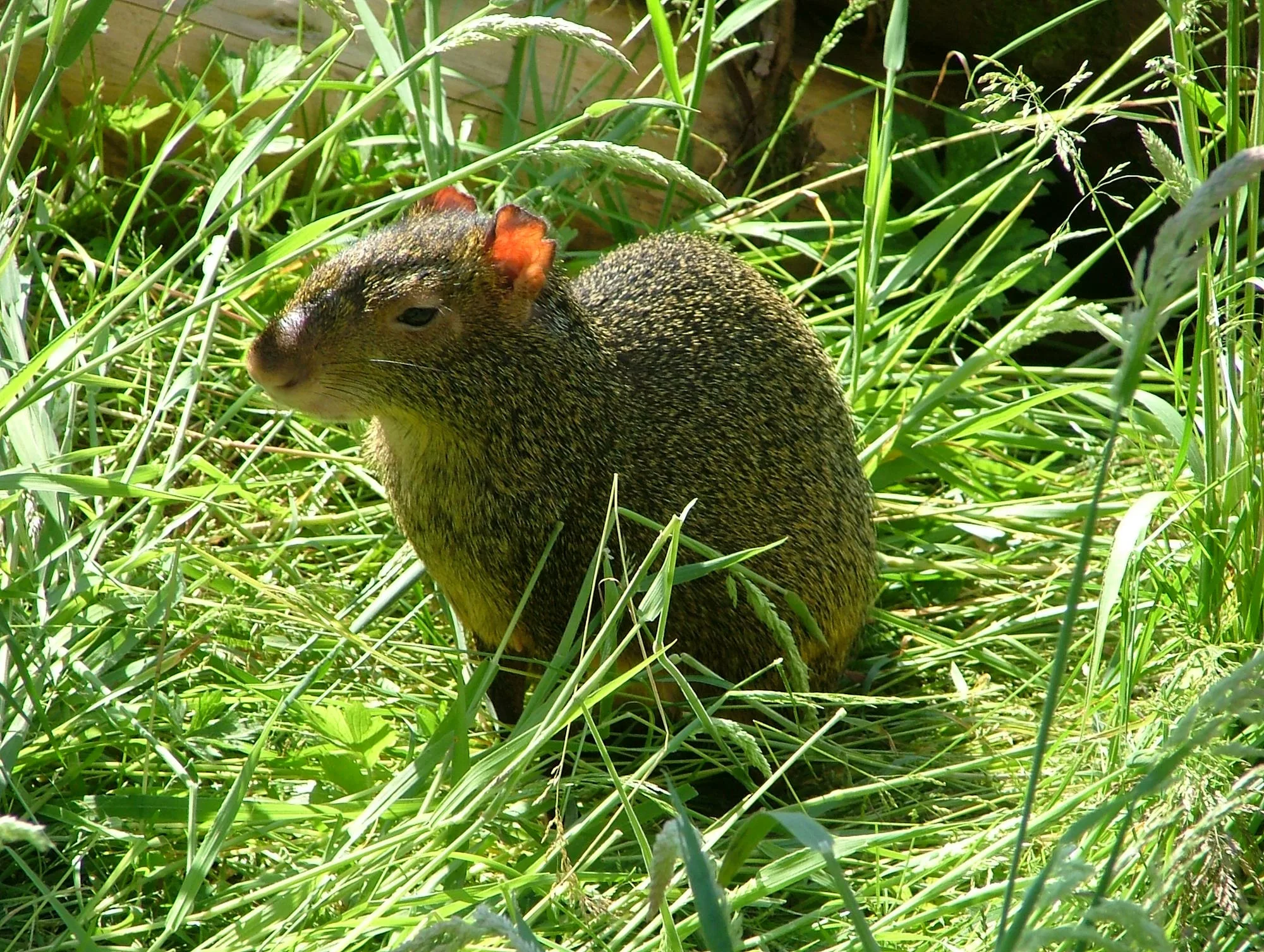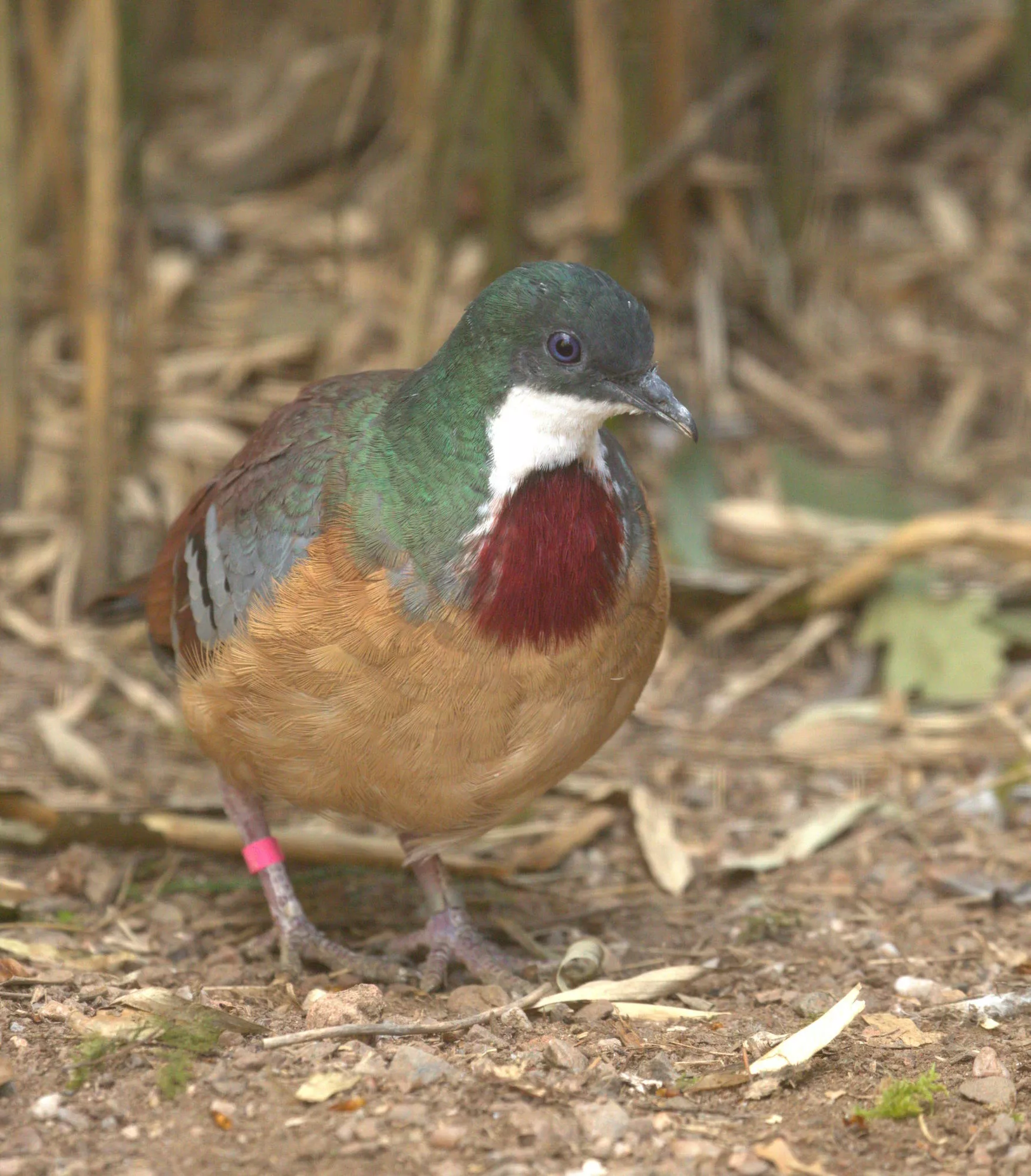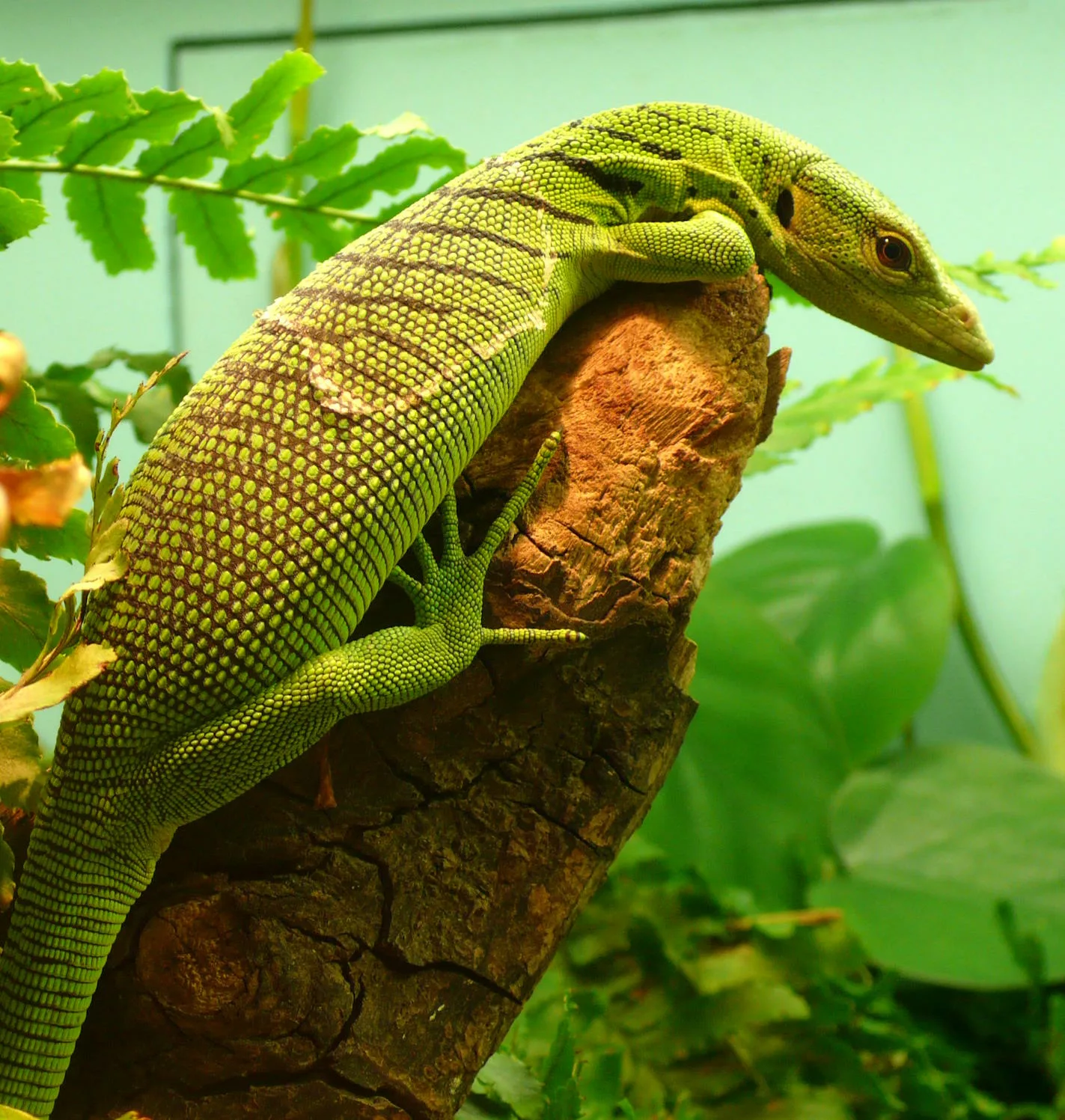
Grey-capped emerald dove
Scientific name: Chalcophaps indica
IUCN listed as: Least Concern
Learn before you visit!
Here are some facts about the species – Discover what they eat, find out about their natural habitat, see what they like to do, and more… Set the reading style to suit you too, everyday speak or something aimed towards children.
Child-friendly
Everyday
Diet
The Grey-capped Emerald Dove primarily feeds on seeds, fruits, and small invertebrates. It forages on the forest floor, often walking around to find fallen fruits and seeds. Their diet is supplemented by berries, figs, and small insects, providing a balanced intake of nutrients. These doves are particularly fond of fruits, which make up a significant portion of their diet. They play a crucial role in seed dispersal, aiding in the propagation of various plant species within their habitat.
Grey-capped Emerald Doves eat seeds, fruits, and small bugs. They walk around on the ground looking for food. They love fruits and help plants grow by spreading seeds. Their diet keeps them healthy and strong.
Breeding
Breeding in Grey-capped Emerald Doves involves building a simple nest made of twigs, typically located in trees or bushes. The female lays two cream-coloured eggs, which both parents take turns incubating for about two weeks. Once hatched, the chicks are fed by regurgitation from both parents. The young doves fledge after around two weeks but remain dependent on their parents for a short period afterward. This breeding strategy ensures a high survival rate for the offspring.
These doves make simple nests in trees or bushes and lay two cream-coloured eggs. Both parents keep the eggs warm and feed the chicks when they hatch. The chicks grow quickly and leave the nest after two weeks. They stay close to their parents until they are ready to live on their own.
Habitat
The natural habitat of the Grey-capped Emerald Dove includes tropical and subtropical forests, mangroves, and farmlands. They are commonly found in regions ranging from the Indian subcontinent to Southeast Asia. These doves prefer dense, wet woodlands where they can find ample food and shelter. They are highly adaptable and can thrive in various forested environments. Habitat preservation is vital for their continued survival, as deforestation poses a significant threat.
Grey-capped Emerald Doves live in tropical forests, mangroves, and farms from India to Southeast Asia. They like dense, wet woodlands with lots of food and places to hide. They can live in different forest areas. Protecting their habitat is important to keep them safe.
At the zoo
In captivity, Grey-capped Emerald Doves are housed in aviaries that mimic their natural forest environments. Zoos provide them with a diet similar to their wild counterparts, including seeds, fruits, and occasional insects. Educational programmes often feature these doves to highlight their ecological role and conservation status. Breeding programmes in zoos help maintain their population and genetic diversity. These doves are relatively easy to care for, making them a staple in many aviary collections.
In zoos, these doves live in aviaries that look like their natural homes. They eat seeds, fruits, and sometimes insects. Zoos teach people about these birds and help protect them. Breeding programmes in zoos help keep their population healthy.
Behaviour
Grey-capped Emerald Doves are mostly terrestrial, spending a considerable amount of time on the ground searching for food. They are known for their fast, direct flight and can be quite tame and approachable. These doves are usually seen alone or in pairs but can form small groups in resource-rich areas. Their call is a soft, low coo, often heard during mating displays. The males also perform a distinctive bobbing dance during courtship to attract females.
These doves spend a lot of time on the ground looking for food. They fly fast and straight and are not afraid of people. They live alone or in pairs but sometimes in small groups. They make soft cooing sounds and perform a dance during courtship.
Fun facts
- The Grey-capped Emerald Dove has bright green wings and a grey cap on its head.
- They help forests grow by spreading seeds when they eat fruits.
- These doves are often tame and not afraid of humans.
- They have a fast and direct flight pattern, making them quick in the air.
- Their call is a soft, low coo, often heard during mating season.
- These doves have green wings and a grey cap on their heads.
- They help plants grow by spreading seeds from the fruits they eat.
- They are often friendly and not scared of people.
- They fly fast and straight, zipping through the air.
- Their call is a gentle cooing sound, especially during the mating season.
More animals to discover at our zoo
Quick Links
Tickets & Prices
You can buy tickets for Exmoor Zoo securely online, as well as finding out more price options, discover offers, and more…
What’s on…
Exmoor Zoo hosts incredible Events all through the year. You can find out about what we’ve got in store here…
Routes & info
Like any great discovery, Exmoor Zoo can feel a little off the beaten path – but don’t worry – you can plan your journey with our recommended routes and other useful travel info.



























